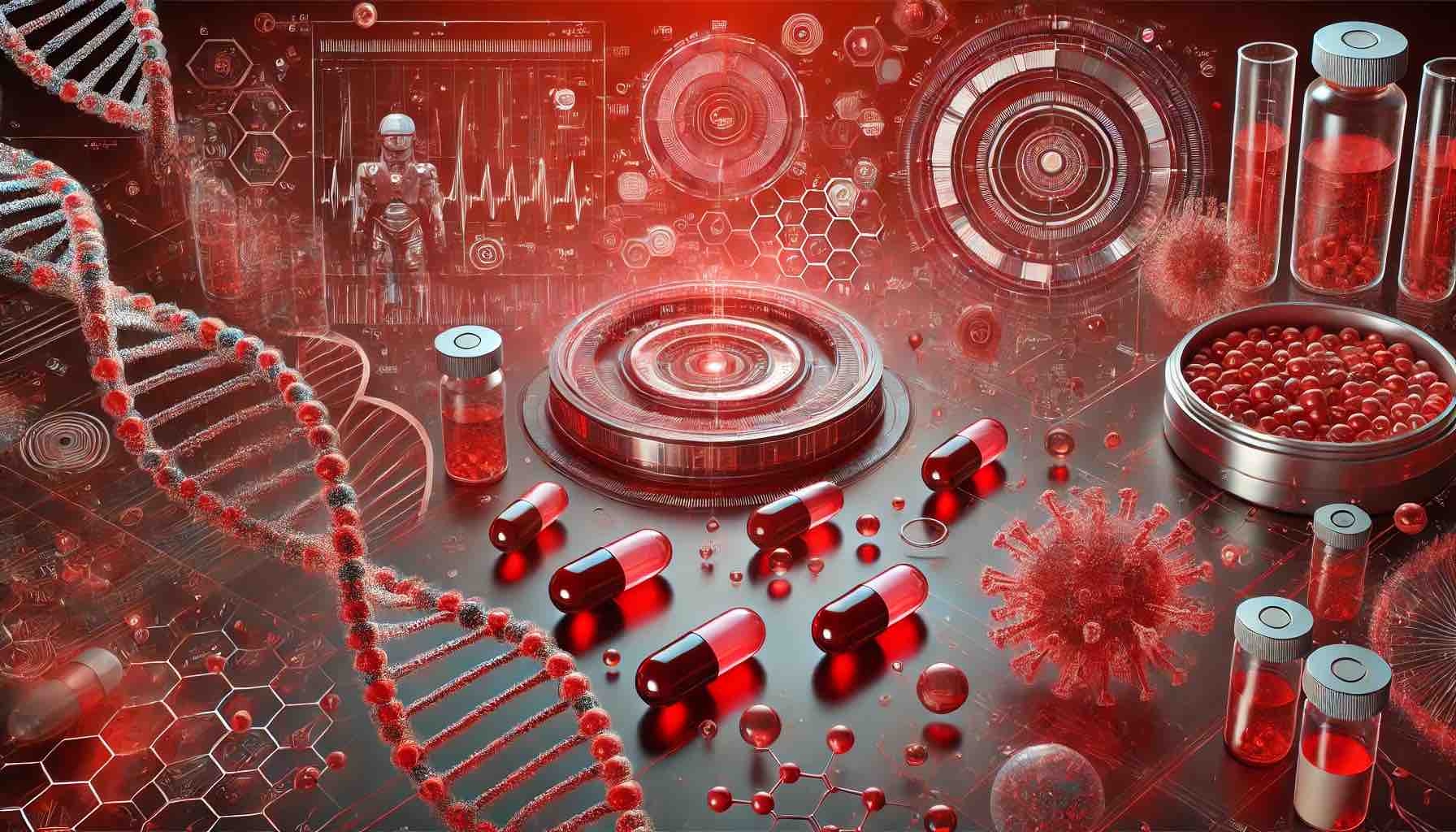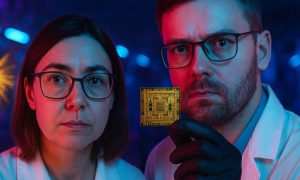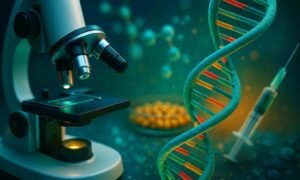

Nanotechnology has emerged as a revolutionary force in healthcare, offering groundbreaking solutions to long-standing challenges in drug delivery. By manipulating materials at the nanoscale, this cutting-edge technology enables precise targeting, reduced side effects, and improved therapeutic outcomes. As we dive into the transformative potential of nanotech in healthcare, particularly drug delivery systems, we’ll explore trends, key innovations, challenges, and the future of this exciting field.
Introduction to Nanotechnology in Drug Delivery
The Basics of Nanotechnology
Nanotechnology involves engineering materials and devices at the molecular and atomic level, typically within the range of 1 to 100 nanometers. In drug delivery, these nanoscale technologies facilitate the transport of therapeutic agents directly to targeted cells or tissues, enhancing efficacy while minimizing adverse effects.
The Need for Innovation in Drug Delivery
Traditional drug delivery systems often suffer from inefficiencies, including poor bioavailability, systemic toxicity, and limited targeting capabilities. The advent of nanotechnology addresses these issues by providing controlled and precise drug release mechanisms. According to a report by Grand View Research (2023), the global nanotechnology drug delivery market is expected to grow at a compound annual growth rate (CAGR) of 17% from 2025 to 2030.
Real-World Applications
Nanoparticles, liposomes, dendrimers, and nanorobots are some of the nanotechnology-enabled tools currently transforming drug delivery. Companies like Moderna (https://www.modernatx.com) have already harnessed lipid nanoparticles for delivering mRNA vaccines, showcasing the potential of this technology in real-world applications.
Trends in Nanotechnology for Drug Delivery
Targeted Drug Delivery
One of the most transformative aspects of nanotechnology is its ability to deliver drugs to specific cells or tissues. A report by Allied Market Research (2024) highlights that targeted drug delivery systems have shown significant success in oncology, where nanoparticles carry chemotherapeutic agents directly to tumor cells. Companies like BIND Therapeutics (https://www.bindtherapeutics.com) are at the forefront of developing nanoparticle-based drug delivery systems to enhance cancer treatment outcomes.
Smart Drug Delivery Systems
Smart nanocarriers, capable of responding to stimuli such as pH, temperature, or enzymes, are another emerging trend. For example, pH-sensitive liposomes release their payload only in acidic tumor environments, ensuring localized treatment. Reports by Nature Nanotechnology (2023) emphasize the growing research in this area, with promising applications in chronic diseases such as diabetes and autoimmune disorders.
Biodegradable Nanomaterials
Sustainability and biocompatibility are critical in modern healthcare. Biodegradable nanomaterials, such as polymeric nanoparticles, are gaining traction due to their reduced environmental impact and enhanced safety profiles. Companies like Nanobiotix (https://www.nanobiotix.com) are leveraging such materials in oncology and other therapeutic areas.
Key Innovations in Nano Drug Delivery Systems
Lipid Nanoparticles (LNPs)
LNPs have gained widespread recognition for their role in delivering RNA-based therapies. Moderna’s and Pfizer-BioNTech’s COVID-19 vaccines demonstrated how LNPs could protect fragile mRNA molecules and ensure efficient cellular delivery. This innovation has opened new avenues for vaccines and genetic therapies.
Dendrimers
Dendrimers are highly branched, tree-like nanostructures capable of carrying multiple drug molecules. These nanoscale carriers enhance drug solubility and provide controlled release. A study by the European Journal of Nanomedicine (2024) underscores their potential in treating neurological disorders, where precise targeting is critical.
Nanorobots
Though still in experimental stages, nanorobots hold immense potential for the future of drug delivery. These microscopic devices can navigate the bloodstream to deliver drugs directly to the site of disease. Reports by McKinsey & Company (2025) predict that nanorobots will revolutionize treatments for conditions like atherosclerosis and targeted cancer therapies.
Challenges and Limitations
Manufacturing and Scalability
Scaling up the production of nanotechnology-based drug delivery systems remains a significant challenge. Reports from Frost & Sullivan (2024) indicate that the cost of raw materials and the complexity of manufacturing processes are major barriers to widespread adoption.
Regulatory Hurdles
The regulatory landscape for nanotechnology in healthcare is still evolving. The European Medicines Agency (EMA) and the U.S. FDA have established guidelines, but uncertainties remain regarding long-term safety and environmental impact. Companies like Arrowhead Pharmaceuticals (https://www.arrowheadpharma.com) are actively engaging with regulators to streamline approval processes.
Ethical Considerations
Ethical concerns, particularly around the use of nanorobots and genetic editing technologies, continue to spark debate. Ensuring transparency and addressing societal fears about “microscopic machines” inside the human body are essential for broader acceptance.
Future Prospects for Nanotechnology in Drug Delivery
Integration with AI and Machine Learning
The integration of AI and machine learning is expected to revolutionize the design and optimization of nanocarriers. AI-driven algorithms can predict drug-nanoparticle interactions, ensuring more effective and personalized therapies. Companies like Insilico Medicine (https://www.insilico.com) are already exploring AI’s potential in nanotechnology research.
Personalized Medicine
Nanotechnology aligns perfectly with the goals of personalized medicine, where treatments are tailored to individual patients. By engineering nanocarriers for specific genetic profiles, healthcare providers can offer more effective and safer therapies.
Expanding Therapeutic Areas
While oncology and infectious diseases dominate current applications, the future of nanotechnology in drug delivery extends to cardiovascular diseases, neurodegenerative disorders, and regenerative medicine. According to a report by BIS Research (2025), the next wave of innovation will focus on multi-functional nanocarriers capable of addressing complex and multifaceted conditions.
Case Studies and Industry Examples
Moderna’s Success with LNPs
Moderna’s groundbreaking use of lipid nanoparticles in its COVID-19 vaccine highlights the practical impact of nanotechnology in healthcare. The company’s technology not only facilitated the rapid development of the vaccine but also demonstrated the scalability of nanotech-enabled solutions (Moderna, 2023).
BIND Therapeutics’ Targeted Nanoparticles
BIND Therapeutics’ Accurins® platform uses nanoparticles for precise drug delivery in oncology. This technology has shown improved efficacy in clinical trials for lung and prostate cancers, setting a benchmark for targeted therapies.
Nanobiotix’s Radiotherapy Enhancement
Nanobiotix’s NanoXray® technology uses nanoparticles to enhance the efficacy of radiotherapy. By increasing radiation absorption at tumor sites, this innovation minimizes damage to surrounding healthy tissues, improving patient outcomes.
Conclusion
Nanotechnology is reshaping drug delivery systems, offering unprecedented precision, efficiency, and potential. While challenges such as scalability and regulatory hurdles persist, the progress made in the past decade underscores the transformative power of this technology. From lipid nanoparticles in vaccines to nanorobots for targeted therapies, the future of healthcare is undeniably nanoscale. With continued research and collaboration, nanotechnology promises to revolutionize medicine and improve lives globally.
Bibliography
Allied Market Research (2024). Targeted Drug Delivery Systems: Nanotechnology Report. Available at: https://www.alliedmarketresearch.com
BIS Research (2025). Future of Nanotechnology in Healthcare. Available at: https://www.bisresearch.com
European Journal of Nanomedicine (2024). Dendrimers in Neurological Disorders. Available at: https://www.ejnanomedicine.com
Frost & Sullivan (2024). Challenges in Scaling Nanotechnology. Available at: https://www.frost.com
Grand View Research (2023). Nanotechnology Drug Delivery Market Analysis. Available at: https://www.grandviewresearch.com
McKinsey & Company (2025). Nanorobots in Healthcare: Opportunities and Challenges. Available at: https://www.mckinsey.com
Moderna (2023). Lipid Nanoparticles in mRNA Vaccines. Available at: https://www.modernatx.com
Nature Nanotechnology (2023). Smart Drug Delivery Systems. Available at: https://www.nature.com/naturenanotechnology
Nanobiotix (2024). NanoXray Technology for Radiotherapy. Available at: https://www.nanobiotix.com
Arrowhead Pharmaceuticals (2024). Streamlining Regulatory Approval for Nanotech. Available at: https://www.arrowheadpharma.com























